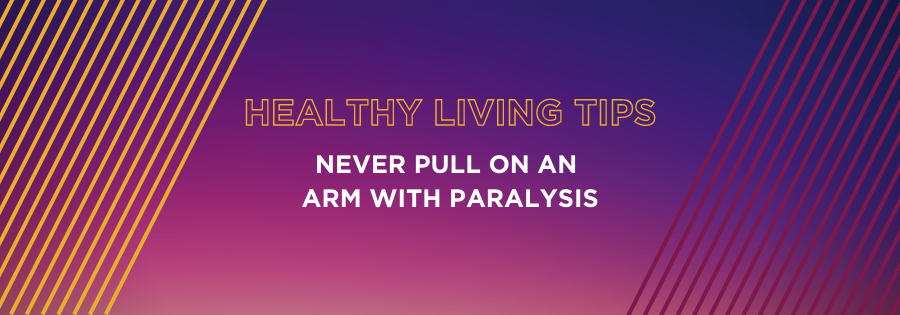VIDEO: Management of Paralysis after a Stroke: Never Pull on an Arm with Paralysis

Back to physical health resource hub
Video Transcript
Hi, my name is Amy Jo Rohe, and I’m an Occupational Therapist at Brooks Rehabilitation in our Outpatient Clinic at Mandarin. And I specialize in neurologic rehabilitation.
Paralysis in the arm also known as hemiparesis is a common effect of a stroke or brain injury.
In this series, I’m going to share strategies and important information about managing an arm that has been affected by a stroke or brain injury.
One of the most important rules to follow is to never pull on a weak arm. This can overstretch the connective tissue and either lead to or aggravate shoulder and arm pain.
The most recommended way to assist someone between surfaces is using a gait belt around the waist or chest to help lift and lower the person.
If you are in a pinch and do not have a gait belt available, it is acceptable in most cases to use the person’s belt or waistband to help lift and lower as long as the waistband is not too easily stretched.
Likewise, when helping somebody roll in bed do not pull on the weaker arm.
Instead lift the knee off of the bed and tuck the weaker arm across the chest. Use contact points behind the shoulder blade and at the knee to help provide leverage.
Remember, these are general recommendations. Everyone is unique.
So be sure to talk to your physical or occupational therapist to learn methods that are safest for you.
For more healthy living tips, visit our YouTube Playlist.


